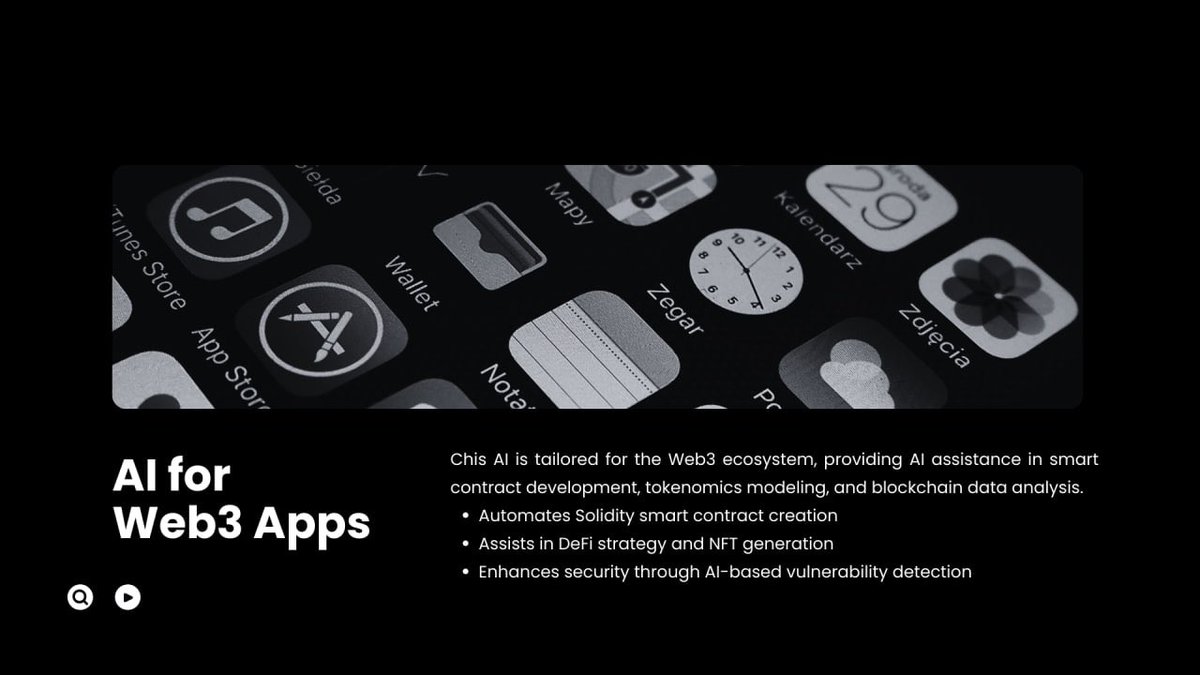The Emergence of AI in the Web3 Ecosystem
The Dawn of a New Era
In the rapidly evolving landscape of technology, the intersection of artificial intelligence (AI) and blockchain is creating unprecedented opportunities. This fusion is not just a futuristic concept but a present reality that is reshaping the Web3 ecosystem. As we stand on the cusp of this technological revolution, it is crucial to understand how AI is being tailored to enhance various aspects of Web3, from smart contract development to tokenomics modeling and blockchain data analysis.
AI in Smart Contract Development
Automating Solidity Smart Contract Creation
Smart contracts are the cornerstone of blockchain technology, enabling automated and secure transactions. However, the process of developing these contracts can be intricate and prone to errors. This is where AI comes into play, particularly with tools like Chis AI. Chis AI automates the creation of Solidity smart contracts, making the process more efficient and less error-prone. By leveraging machine learning algorithms, Chis AI can analyze existing smart contracts, identify best practices, and generate new contracts that are optimized for performance and security[1].
Enhancing Security through AI-Based Solutions
Security is a paramount concern in the blockchain world, and AI is proving to be a formidable ally in this regard. AI-based solutions can detect vulnerabilities in smart contracts, predict potential security threats, and even suggest patches or improvements. For example, AI can analyze patterns in transaction data to identify suspicious activities, thereby enhancing the overall security of the blockchain network. This proactive approach to security is essential for building trust and ensuring the integrity of the blockchain ecosystem.
AI in Tokenomics Modeling
Assisting in DeFi Strategy and NFT Generation
Tokenomics refers to the economic model of a cryptocurrency or token, including its distribution, inflation, and governance. AI can assist in modeling tokenomics by analyzing market trends, user behavior, and economic indicators. This helps in creating more robust and sustainable token economies. For instance, AI can simulate different token distribution scenarios to determine the optimal strategy for maximizing liquidity and minimizing volatility.
In the realm of decentralized finance (DeFi), AI can assist in developing strategies that optimize yield farming, liquidity provision, and other financial activities. Similarly, in the non-fungible token (NFT) space, AI can generate unique and valuable NFTs by analyzing market demand and user preferences. This not only enhances the value of NFTs but also makes the creation process more efficient and aligned with market needs.
AI in Blockchain Data Analysis
High Transaction Throughput and Low Fees
Blockchain data analysis is crucial for understanding the performance and health of a blockchain network. AI can analyze vast amounts of blockchain data to identify patterns, detect anomalies, and provide insights into network performance. For example, Somnia Network, a layer-1 blockchain, focuses on high transaction throughput (400k TPS) and low fees, making it ideal for gaming, metaverse, and NFT applications. AI can help optimize these parameters by analyzing transaction data and suggesting improvements in network protocols[2].
Interoperability and Scalability
Interoperability and scalability are key challenges in the blockchain ecosystem. AI can play a significant role in addressing these challenges by analyzing cross-chain data and suggesting interoperability solutions. For instance, AI can identify compatible protocols and suggest integration points, thereby enhancing the interoperability of different blockchain networks. Similarly, AI can analyze network congestion data and suggest scalability solutions, such as sharding or sidechains, to improve network performance.
The Future of AI in Web3
Integrating AI and Blockchain for a Smarter Future
The integration of AI and blockchain technology is poised to revolutionize the Web3 ecosystem. As AI continues to evolve, its applications in smart contract development, tokenomics modeling, and blockchain data analysis will become more sophisticated and impactful. This will lead to a more secure, efficient, and user-friendly blockchain ecosystem, paving the way for widespread adoption and innovation.
Ethical Considerations and Challenges
While the potential of AI in Web3 is immense, it also raises ethical considerations and challenges. For instance, the use of AI in smart contract development and tokenomics modeling must be transparent and unbiased. Additionally, the security of AI-based solutions must be robust to prevent malicious attacks. As we move forward, it is crucial to address these challenges and ensure that AI is used responsibly and ethically in the Web3 ecosystem.
Conclusion: Embracing the AI-Driven Web3 Future
The convergence of AI and blockchain technology is transforming the Web3 ecosystem, making it more efficient, secure, and user-friendly. From automating smart contract creation to optimizing tokenomics and enhancing blockchain data analysis, AI is playing a pivotal role in shaping the future of Web3. As we embrace this AI-driven future, it is essential to address the ethical considerations and challenges, ensuring that AI is used responsibly and ethically. The future of Web3 is bright, and AI is at the forefront of this revolution.

